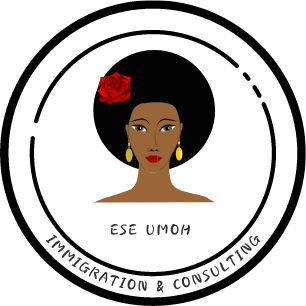Dear future neighbour,
On October 28, 2025, Immigration, Refugees and Citizenship Canada (IRCC) held Express Entry Draw #375, inviting 1,000 skilled workers under the Canadian Experience Class (CEC) category to apply for permanent residence. The minimum Comprehensive Ranking System (CRS) score required was 533, just one point lower than the last CEC draw earlier this month.
See below key highlights of draw
- Draw Number: #375
- Date of Draw: October 28, 2025
- Program: Canadian Experience Class (CEC)
- Number of Invitations (ITAs): 1,000
- Minimum CRS Score: 533
- Tie-Breaking Rule: March 21, 2025
What This Means for Applicants
This draw is another signal that IRCC is prioritizing experienced talent already in Canada. The Canadian Experience Class program focuses on candidates who have at least one year of skilled work experience in Canada, solid language skills, and a desire to transition from temporary to permanent status.
The cutoff score of 533 remains competitive but the slight dip from 534 in the October 1 draw hints that the pool is slowly opening up. This is encouraging news for many skilled workers who have been waiting for lower CRS thresholds.
If your CRS score is in the low 530s, you’re getting close to that golden invitation zone.
IRCC Keeps Things Steady
Over recent months, Canada has leaned toward program-specific draws rather than “all-wprogram” rounds. This targeted approach allows IRCC to strategically select candidates who can meet current labour market needs.
Here’s what’s noteworthy:
•Consistency – The last few CEC draws have each invited 1,000 candidates.
•Stable CRS Range – The cutoff has hovered around 533–534, indicating IRCC’s controlled pace in selecting top-tier applicants.
•Focus on In-Canada Workers – Prioritizing the CEC pool supports smoother transitions for those already living, working, and contributing to the Canadian economy.
In short, Canada is doubling down on retaining domestic talent—a clear nod to its “grow from within” immigration strategy.
See below summary of Express Entry draws in 2025
| Date | Draw Type | Number of ITAs | Cut-off CRS score |
|---|---|---|---|
| October 29 | French language proficiency | 6,000 | 416 |
| October 28 | Canadian Experience Class | 1,000 | 533 |
| October 27 | Provincial Nominee Program | 302 | 761 |
| October 15 | Healthcare and social services | 2,500 | 472 |
| October 14 | Provincial Nominee Program | 345 | 778 |
| October 6 | French language proficiency | 4,500 | 432 |
| October 1 | Canadian Experience Class | 1,000 | 534 |
| September 29 | Provincial Nominee Program | 291 | 855 |
| September 18 | Trade | 1,250 | 505 |
| September 17 | Education | 2,500 | 462 |
| September 15 | Provincial Nominee Program | 228 | 746 |
| September 4 | French language proficiency | 4,500 | 446 |
| September 3 | Canadian Experience Class | 1,000 | 534 |
| September 2 | Provincial Nominee Program | 249 | 772 |
| August 19 | Healthcare and social services | 2,500 | 470 |
| August 18 | Provincial Nominee Program | 192 | 800 |
| August 8 | French language proficiency | 2,500 | 481 |
| August 7 | Canadian Experience Class | 1,000 | 534 |
| August 6 | Provincial Nominee Program | 225 | 739 |
| July 22 | Healthcare and social services | 4,000 | 475 |
| July 21 | Provincial Nominee Program | 202 | 788 |
| July 8 | Canadian Experience Class | 3,000 | 518 |
| July 7 | Provincial Nominee Program | 356 | 750 |
| June 26 | Canadian Experience Class | 3,000 | 521 |
| June 23 | Provincial Nominee Program | 503 | 742 |
| June 12 | Canadian Experience Class | 3,000 | 529 |
| June 10 | Provincial Nominee Program | 125 | 784 |
| June 4 | Healthcare and social services | 500 | 504 |
| June 2 | Provincial Nominee Program | 277 | 726 |
| May 13 | Canadian Experience Class | 500 | 547 |
| May 12 | Provincial Nominee Program | 511 | 706 |
| May 2 | Healthcare and social services | 500 | 510 |
| May 1 | Education | 1,000 | 479 |
| April 28 | Provincial Nominee Program | 421 | 727 |
| April 14 | Provincial Nominee Program | 825 | 764 |
| March 21 | French language proficiency | 7,500 | 379 |
| March 17 | Provincial Nominee Program | 536 | 736 |
| March 6 | French language proficiency | 4,500 | 410 |
| March 3 | Provincial Nominee Program | 725 | 667 |
| February 19 | French language proficiency | 6,500 | 428 |
| February 17 | Provincial Nominee Program | 646 | 750 |
| February 5 | Canadian Experience Class | 4,000 | 521 |
| February 4 | Provincial Nominee Program | 455 | 802 |
| January 23 | Canadian Experience Class | 4,000 | 527 |
| January 8 | Canadian Experience Class | 1,350 | 542 |
| January 7 | Provincial Nominee Program | 471 | 793 |
What You Should Do Next
If you’re already in the Express Entry pool:
1. Check your CRS score
If you’re at or above 533, you may have been invited or are in a strong position for the next round.
2. Update your profile regularly
Ensure that your work history, education, and language test results are accurate and current.
3. Look for opportunities to boost your CRS
Consider:
•Improving your language scores (IELTS/CELPIP or TEF).
•Gaining additional Canadian work experience.
•Securing a provincial nomination (+600 CRS points!).
•Getting a valid job offer supported by LMIA.
4. Be ready for your ITA
Once invited, you’ll have 60 days to submit your PR application. Prepare your documents early: police certificates, medicals, work letters, etc. so you can file quickly and correctly.
Need help with your Canadian immigration process?
Whether you’re applying for a visitor visa, submitting a work permit or visa application, creating an Expression of Interest (EOI), setting up an Express Entry or Provincial Nomination profile, preparing your application after receiving an Invitation to Apply, or simply want a professional review of your self-prepared application, we’re here to assist you.
Schedule a 30-minute / 60- minute consultation or contact us at:
info@eseumohimmigration.com















